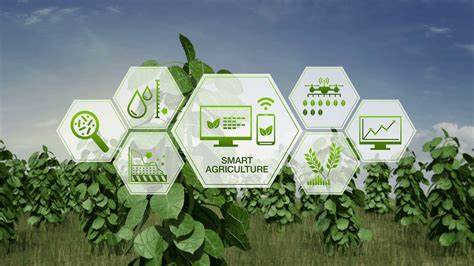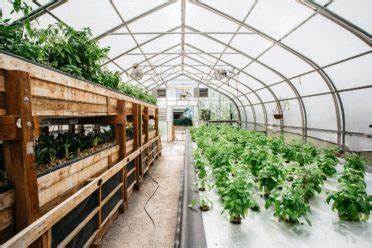
Introduction
In today’s rapidly advancing world, the concept of vertical farming has gained significant attention and recognition. This innovative approach to agriculture holds the potential to transform the way we grow and produce food. By utilizing vertical space and integrating cutting-edge technology, vertical farming offers a promising solution to address the challenges of traditional farming methods. In this article, we will explore the historical background, key concepts, and potential benefits of vertical farming, as well as examine case studies, current trends, challenges, and the future outlook of this revolutionary practice.
Historical Background
The roots of vertical farming can be traced back to ancient civilizations, where people utilized terraced farming techniques to maximize land use and crop production. However, it wasn’t until the 20th century that the concept of modern vertical farming began to take shape. In the 1950s, the idea of growing plants indoors using artificial lighting gained popularity with the development of hydroponics. This soilless cultivation method allowed plants to grow in nutrient-rich water solutions, paving the way for vertical farming as we know it today.
Key Concepts and Definitions
Vertical farming refers to the cultivation of crops in vertically stacked layers or structures. This method eliminates the need for large land areas typically required for traditional farming, making it an ideal solution for urban areas with limited space. Hydroponics, one of the key concepts associated with vertical farming, involves growing plants in nutrient solutions without soil. Another technique used in vertical farming is aeroponics, which involves misting the plant roots with a nutrient solution. Controlled environment agriculture plays a vital role in vertical farming by providing optimal conditions for plant growth, including temperature, humidity, and lighting.
The integration of technology has revolutionized vertical farming, enabling automation, artificial intelligence, and data analytics to optimize crop production. Advanced sensors and monitoring systems allow farmers to closely monitor plant health, nutrient levels, and environmental conditions, leading to more precise and efficient cultivation practices.

Main Discussion Points
Increased Crop Yield and Efficiency
Vertical farming maximizes land use by utilizing vertical space, allowing for multiple layers of crops to be grown in a single structure. This innovative approach significantly increases crop yield per square foot compared to traditional farming methods. Additionally, vertical farming offers the potential for year-round cultivation, reducing dependence on seasonal conditions and enabling multiple harvests. The efficiency of resource utilization is another key advantage of vertical farming, as it requires less water and energy compared to conventional agriculture.
Sustainable and Environmentally Friendly Practices
Vertical farming offers sustainable and environmentally friendly practices that address some of the major challenges faced by traditional farming. By utilizing techniques such as hydroponics and aeroponics, vertical farming reduces water consumption significantly compared to soil-based cultivation. Additionally, the controlled environment in vertical farms minimizes the need for pesticides, making it a safer and more sustainable approach to food production. Moreover, vertical farming has the potential to reduce transportation distances and carbon emissions by bringing food production closer to urban areas, thereby promoting food security and resilience.
Urban Agriculture and Food Accessibility
With rapid urbanization and limited space in cities, vertical farming provides a viable solution for urban agriculture. By utilizing unused buildings, rooftops, or specially designed structures, vertical farms can be established in urban areas, bringing food production closer to consumers. This localized approach contributes to improved food accessibility, reducing reliance on long-distance transportation and ensuring fresher produce for urban communities. Vertical farming also has the potential to address food deserts, where access to fresh and nutritious food is limited, by providing a consistent supply of locally grown produce.

Case Studies or Examples
Several successful vertical farming projects and companies have emerged, showcasing the potential and impact of this innovative practice. For instance, AeroFarms, based in New Jersey, has developed a vertical farming system that utilizes aeroponics and LED lighting to grow crops in a controlled environment. The company has achieved remarkable success in maximizing crop yield and reducing resource usage. Another notable example is Plenty, a vertical farming startup that utilizes robotics and machine learning to optimize crop growth. These case studies demonstrate the capabilities of vertical farming and provide valuable insights into the achievements, challenges, and lessons learned in this field.
Current Trends or Developments
Vertical farming is continuously evolving, with ongoing advancements in technology and cultivation practices. Researchers are exploring innovative lighting systems, such as LED and advanced spectrum lighting, to optimize plant growth and energy efficiency. Additionally, automation and artificial intelligence are being integrated into vertical farming systems to streamline operations and improve productivity. The emergence of vertical farming startups and increased investments in the industry indicate a growing interest and potential for future growth in this field.
Challenges or Controversies
Scaling up vertical farming operations presents several challenges, including high initial costs, complex logistics, and the need for specialized knowledge and expertise. Additionally, concerns have been raised regarding the high energy consumption associated with artificial lighting in vertical farms. While technological advancements aim to address these challenges, the economic feasibility and profitability of vertical farming remain subjects of debate. Further research and development are needed to overcome these obstacles and ensure the long-term sustainability of vertical farming.

Future Outlook
Looking ahead, vertical farming holds immense potential for growth and expansion. As urban areas continue to expand, the integration of vertical farming with smart cities and sustainable urban development is likely to gain momentum. The convergence of vertical farming with emerging technologies, such as Internet of Things and renewable energy, offers exciting possibilities for increased efficiency and productivity. Furthermore, ongoing research and advancements in technology and crop selection will continue to refine and optimize vertical farming practices.
Conclusion
Vertical farming represents a groundbreaking approach to agriculture that combines technology, innovation, and sustainability. By maximizing land use, reducing resource consumption, and bringing food production closer to urban areas, vertical farming has the potential to revolutionize the way we grow and access food. As research and development in this field continue to progress, it is crucial to explore and invest in vertical farming as a viable solution to address the challenges of traditional agriculture and ensure a sustainable future.
References
AeroFarms Website: www.aerofarms.com
Plenty Website: www.plenty.ag
Despommier, D. (2010). The Vertical Farm: Feeding the World in the 21st Century. St. Martin’s Griffin.
Kim, M. (2017). Vertical Farming: Concepts, Benefits, and Challenges. Sustainability, 9(9), 1623.
Low, S., & Lee, J. (2019). Vertical Farming: A Technological Solution for Food Security? A Case Study of LED Farm. Sustainability, 11(3), 598.




